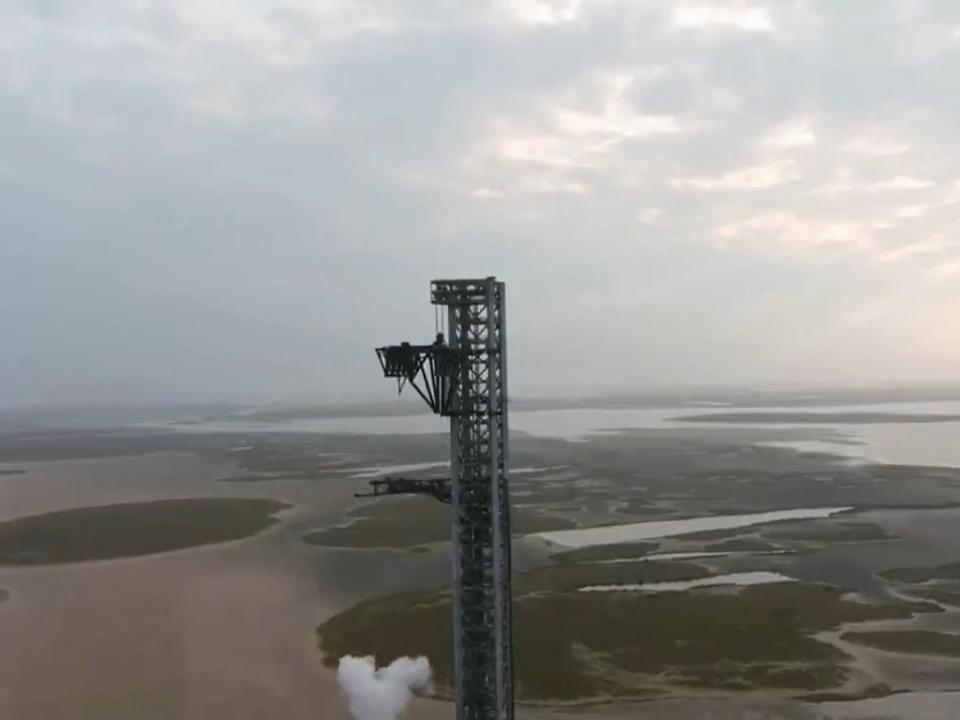Elon Musk unveils Starship launch tower, complete with arms to catch rocket

SpaceX boss Elon Musk has unveiled the tower that will be used to launch – and catch – its Mars-bound Starship rocket.
The structure, which is under construction at the space firm’s Starbase facility in Texas, features chopstick-like arms that will be used to cradle the rocket’s booster back into position after delivering the second-stage into orbit.
Starship launch & catch tower pic.twitter.com/5mLIQwwu0k
— Elon Musk (@elonmusk) January 9, 2022
Robotics researcher Lex Fridman described the launch tower as “one of the wildest engineering designs ever”.
The first orbital launch of a Starship rocket is set to take place within the next 10 weeks, which will see the space craft lift off from Starbase before completing a 90-minute journey and landing off the coast of Hawaii.
Once development and testing is complete, SpaceX plans to mass manufacture Starship rockets with the eventual goal of using a fleet of the next-generation rockets to set up a permanent human colony on Mars.
Elon Musk’s firm is also in the process of acquiring disused oil rigs in order to repurpose them and establish a global network of off-shore launch facilities.
The billionaire has previously stated a target of sending Starships to the Moon by 2024 and to Mars by 2030, however their development has been delayed by a law suit involving Jeff Bezos’s Blue Origin and Nasa.
The legal action stemmed from a complaint that a bidding process to develop a moon lander for the US space agency had unfairly awarded the contract to SpaceX, however it was eventually dismissed.
Blue Origin is yet to complete an orbital mission of its New Shepard rocket, while SpaceX has a proven history of delivering payloads to Space.
In 2021, SpaceX broke its own record by launching more than 30 rockets into orbit in a single calendar year.
The firm also broke its record for back-to-back launches after two separate missions using reusable Falcon 9 rockets took place within 15 hours of each other.
Rocket reusability will be key to achieving Musk’s goals for Starship, with the latest launch tower design potentially allowing multiple missions a day using the same rocket booster.
The catching arms also negate the need for legs on the booster, thus reducing the weight, fuel requirements and cost for each launch.
It is unlikely that the arms will be used in the first attempt at an orbital Starship flight, which is expected to take place in March, as there is not time to test all of its mechanisms sufficiently.

 Yahoo Finance
Yahoo Finance 